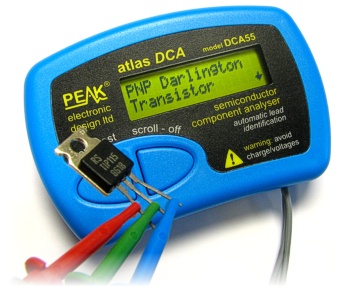A fellow ham recently pointed out this very inexpensive Logic Analyzer ($10 CDN) from seller mhestore2009 on eBay, and I had to get one. It is a much less expensive clone of the real Saleae Logic Analyzer. I thought that writing this short review might be interesting to others.
It was dead easy to set up, and the software is very easy to use. Here is a screenshot of the display of an 8 bit binary counter (coming out of a PICAXE, actually), click on it for a larger version:
Next is a display of a serial communications stream from a Raspberry Pi and a dumb terminal (it seemed to pick up the 0 to 3.3 volt logic OK). Note that the software actually understands the ascii serial protocol and displays the characters transmitted along with the logic levels:
Lastly, here is the display of an I2C stream between a Raspberry Pi and a PICAXE chip:
As well as Serial and I2C, the software can decode and display SPI, CAN, 1-Wire, UNI/O, I2S/PCM, MP Mode 9-bit Serial (i.e. Multidrop and Multiprocessor mod), Manchester, DMX-512, Parallel, JTAG*, LIN*, Atmel SWI*, MDIO*, BiSS C*, PS/2 Keyboard/Mouse*, HDLC*, HDMI CEC*, and USB 1.1*. (* currently in beta).
I have kind of mixed feelings about these Chinese clones using software that has been developed for more expensive hardware. It will be interesting to see how the real Saleae Logic Analyzer company reacts, maybe they will add a serial code or some other test to the software to block the clones from using it.
On the other hand, I think that makers and hobbyists are the main target for the clones, and maybe the company will allow the clones to use their software, assuming that real companies with critical projects will by the real thing from them. Will have to see how it plays out.
Eric Pierce VA3EP - See the Disclaimer in the Introduction
© Eric Pierce and "VA3EP Amateur Radio And Other Geek Pursuits", 1952-2099. Unauthorized use and/or duplication of this material without express and written permission from this blog’s author and/or owner is strictly prohibited. Excerpts and links may be used, provided that full and clear credit is given to Eric Pierce and "VA3EP Amateur Radio And Other Geek Pursuits", with appropriate and specific direction to the original content.
© Eric Pierce and "VA3EP Amateur Radio And Other Geek Pursuits", 1952-2099. Unauthorized use and/or duplication of this material without express and written permission from this blog’s author and/or owner is strictly prohibited. Excerpts and links may be used, provided that full and clear credit is given to Eric Pierce and "VA3EP Amateur Radio And Other Geek Pursuits", with appropriate and specific direction to the original content.



.jpg)
.jpg)



